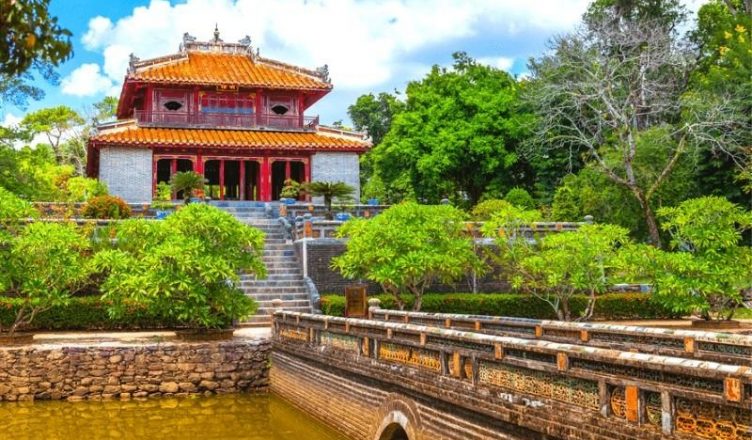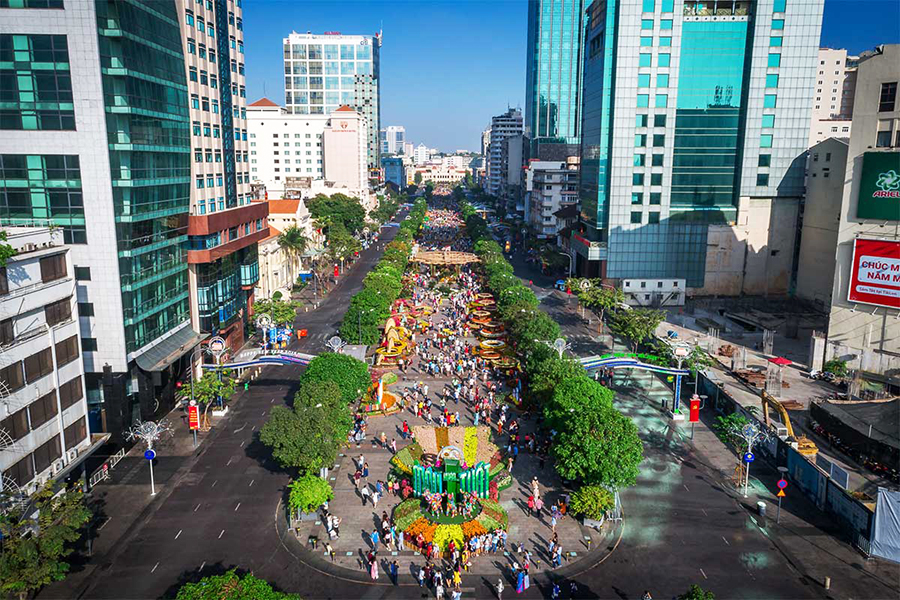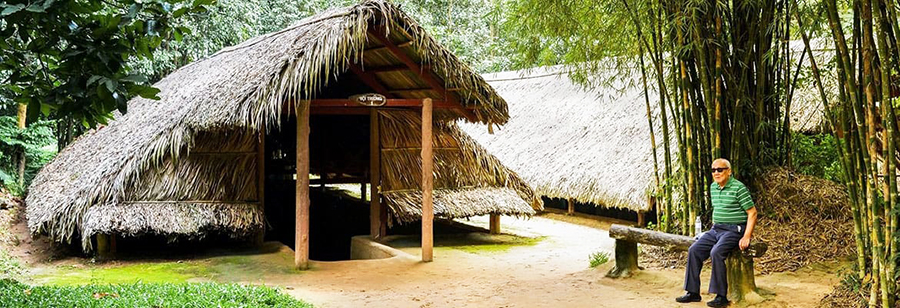Minh Mang Tomb (also called Hieu Tomb – means filial piety) was built under the reign of two Kings – King Ming Mang and his successor, King Thieu Tri. The tomb was built from 1840 to 1843 by more than ten thousand workers and soldiers on Cam Khe Mountain, near Bang Lang T-junction, 12 km away from Hue Citadel. Visitors can take a boat trip from Hue Tours, along Perfume River Hue, to reach the tomb with Vietnam Shore Excursions.
History of Minh Mang Tomb
In February 1820, when Gia Long passed away, his fourth son named Nguyen Phuc Dam acceded and labeled himself King Minh Mang. Not until 1840 did the king decide to construct his tomb in Cam Khe Mountain (An Bang village, Huong Tra district) whose name was then changed into Hieu Mountain and called the tomb Hieu Tomb.
In January 1841, King Minh Mang died of illness when the construction was still on its way. His son – King Thieu Tri acceded and continued carrying out building the tomb based on the former design. In August 1841, the corpse of Minh Mang was moved into Buu Thanh (the circular wall surrounding the grave) and in 1843, the construction of the tomb was finished. Cam Khe mountain, from a wild and separated one, through the hands and creativity of humans, has become a majestic tomb with glorious architecture which not only comes along with nature but also is highly appreciated by its spiritual value.
- You may be interested in our Hue Tour from Da Nang, Hue to Hoi An Jeep Tour, Hue Street Food Tour, and DMZ Tour Hue.
The Architecture of Minh Mang Tomb
Minh Mang Tomb is a comprehensive architecture of about 40 large and small works including palaces, castles, temples, etc., which are organized symmetrically on a vertical axis (called Than Dao) from the Great Red Gate to La Wall behind the king’s grave. The works are distributed in three parallel axes. In general, the tomb includes some parts below.
What to See and Do at the Tomb of Minh Mang?
Minh Mang Tomb Hue consists of roughly 40 monuments on an oval 44-acre lot surrounded by a high wall. The complex is divided into two parts by a straight axis (nearly 2,300 feet long), where the monuments are displayed on. What interests visitors is that reflective ponds fringed with pine trees surround the whole complex.
The Great Red Gate
It is the main gate with three ways and 24 roofs decorated gloriously. The main way which is in the middle was opened only one time for the king’s coffin to pass; the other two on the left and right ones are particularly for others.
Bi Temple
Located behind the Great Red Gate, Bi Temple is the representative of Vietnamese architecture of the religious place. Outside of the temple, there is a large yard with 2 lines of stone mandarins, elephants, and horses. Inside of it, there is a stele engraved with the script that Thieu Tri Emperor wrote about his father’s achievements.
Main area
It is the worship place for the royal family. If you continue to go inside the tomb, you will reach the Hieu Duc Gate and Sung An temple adorning the tablets of the King and his Queen – Ta Thien An Empress in the center.
Minh Lau
Going through 3 bridges – Trung Dao (in the middle), Ta Phu (left), Huu Bat (right) cross Truong Minh Lake, you can visit Minh Lau (which means lightening pavilion) lying on Tam Dai Son hills. The pavilion has a square shape of 2 floors and 8 roofs. Two sides of the pavilion respectively stand two pillars on two hills called Binh Son and Thanh Son. Behind Minh Lau, there is a flower garden that is set up based on an asymmetric axis to form a Chinese letter meaning longevity.
Buu Thanh (the Surrounding Wall of the Grave)
New moon-shaped lake – Tan Nguyet Lake embraces Buu Thanh in the middle. Passing a bridge with 33 stone steps over Tan Nguyet Lake, visitors arrive at the place where the king rests. It’s a hill named Khai Trach Son located inside Buu Thanh.
Apart from its majestic and imposing features, Minh Mang tomb also allures tourists by the captivating beauty of nature which has been somehow distorted to combine harmoniously with the architecture here.
Minh Mang Tomb Entrance Fee
Entrance ticket to Minh Mang Tomb in 2023:
- Adults: 150,000 VND per person
- Children: 30,000 VND per person
Minh Mang Tomb Opening Hours
The tomb is open from 7 a.m. to 5 p.m. every day even on the Tet holiday in Vietnam. so it is easy for you to plan a Hue day tour to visit all of Hue City’s highlight attractions.
Minh Mang Tomb Map
How to get to Minh Mang Tomb?
Minh Mang Tomb is rather far from Hue City. You can hire a motorbike to get there. Another way is to take a taxi. You will pay by km. Boat Ride on Perfume River is another. You will have a chance to enjoy the most beautiful landscape here. But the best way is to book Hue City Tour 1 day with a local private tour guide via Vietnam Shore Excursions.
Extra Tips about Tomb of Minh Mang
- The best time to visit Minh Mang Tomb Hue is from January to February, which is the most suitable period to visit the historical destinations in Hue.
- The average time to visit the whole construction of the Tomb of Minh Mang is from 3 to 4 hours.
- Tourists visiting the Tomb of Minh Mang Hue Vietnam as well as other tombs and temples in Hue should dress politely. Shorts, short skirts or sleeveless shirts are not encouraged.
- There are some areas in the Tomb of Minh Mang where photos are not allowed. Tourists must pay attention to the instruction as well as the caution signpost in order not to break the rules.
- If you travel in a family with children, remember to keep an eye on them. The lakes there are quite deep and dangerous for children.
- Unless you know what to visit in Minh Mang Tomb Hue Vietnam, just follow the Than Dao axis from the entrance. All the major constructions are on that path.
- Going with a tour guide might be useful since you can know more stories about King Minh Mang as well as the construction of the tomb.
Despite the change of time and history, the Tomb of Minh Mang still remains intact. Along with the tombs of Tu Duc and Thieu Tri, Minh Mang Tomb is one of the worthiest destinations for a visit of tourists in Hue City. The whole construction is the combination of human and nature, preserving all the values and meanings of a period in Vietnamese history. If you have a chance to visit Hue City, don’t forget to include the Tomb of Minh Mang in your itinerary.



















